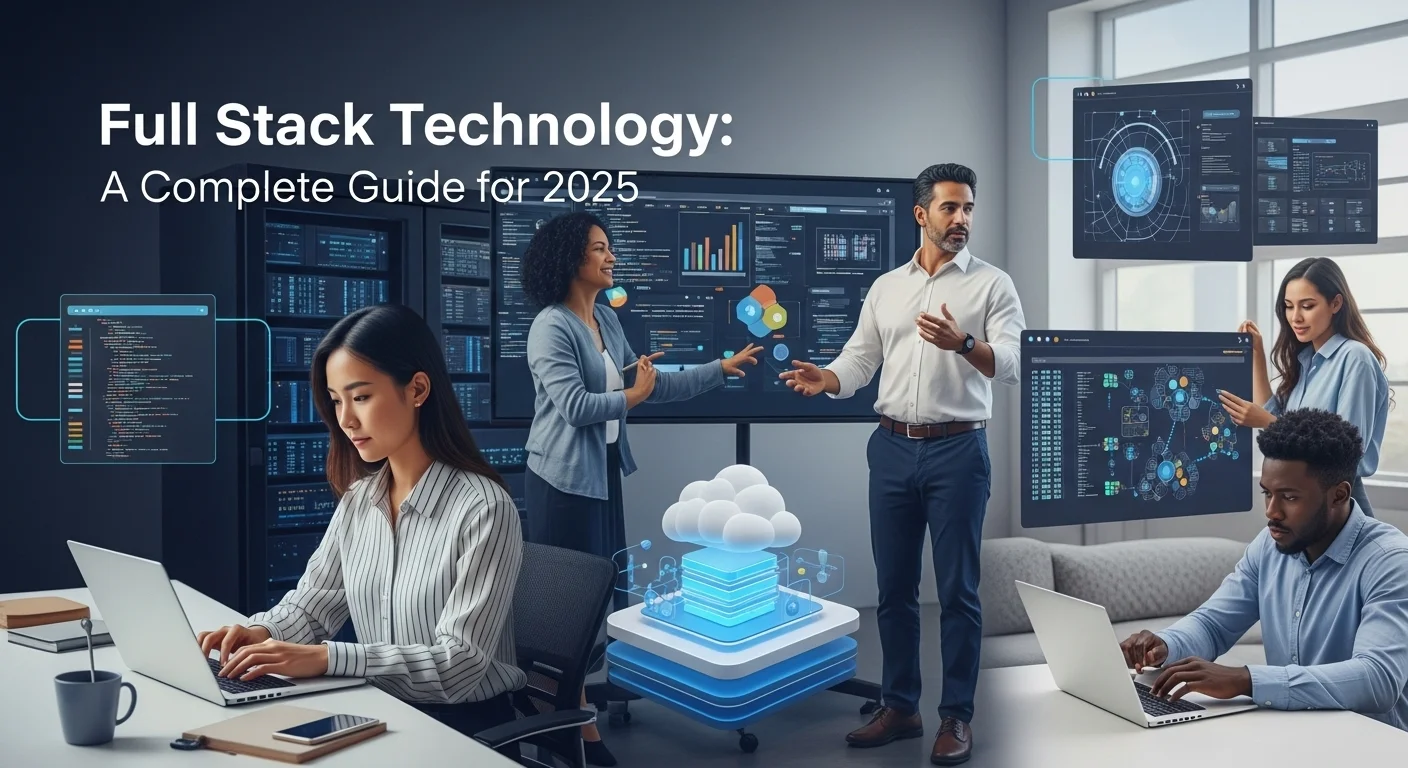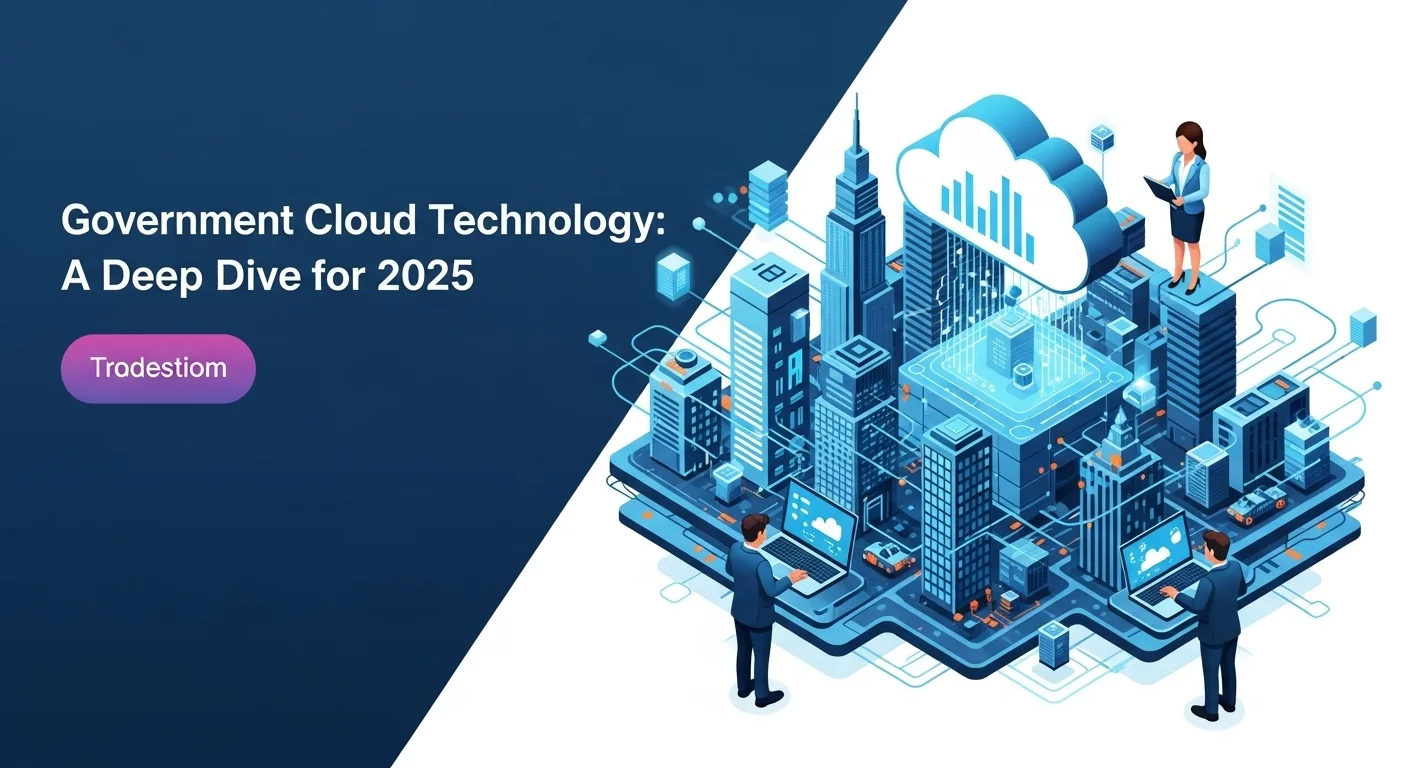What is the Cloud? A Personal Guide to Understanding Cloud Technology

Executive Summary
In my years as a cloud strategist, I've seen the term 'the cloud' go from tech jargon to a fundamental part of modern business. But what does it actually mean for you? Forget the complex definitions for a moment. Think of the cloud as a powerful, global computer you can tap into anytime, from anywhere. This article is my personal guide to help you navigate it. We'll break down the essentials, like the different service models (IaaS, PaaS, SaaS), in simple terms. I'll share insights on how things like virtual desktops are changing how we work and why a solid online backup plan is non-negotiable. We'll even look at the big players like AWS, Azure, and Google. My goal is to cut through the noise and give you the practical knowledge you need to use the cloud to grow your business or simply sharpen your tech skills.
Table of Contents
Table of Contents
- What is the Cloud and Why Does It Matter?
- Core Concepts: IaaS, PaaS, and SaaS
- The Real-World Impact on Modern Tech
- How Businesses Are Using the Cloud Today
- A Practical Guide to Cloud Solutions for Your Business
- Comparing the Giants: AWS vs. Azure vs. Google Cloud
- Your Game Plan for Cloud Migration and Management
- Business Strategies to Get the Most from the Cloud
- Pro Tips for Mastering Your Cloud Experience
What is the Cloud and Why Does It Matter?
The term 'the cloud' gets thrown around constantly, but I find that many people don't fully grasp what it is or why it's such a big deal. At its heart, the cloud is simply a network of powerful servers spread across the globe, accessible via the internet. Instead of storing files or running programs on your own computer's hard drive, you're using someone else's. This might sound simple, but this shift from 'local' to 'remote' has completely changed the game. It allows anyone, from a single entrepreneur to a massive corporation, to access incredible computing power on demand, usually by paying only for what they use. It’s this accessibility that has leveled the playing field, letting small startups build amazing things that once required a fortune in hardware.
The Core Concepts: IaaS, PaaS, and SaaS
To really get a handle on the cloud, you need to understand the three main ways it's offered. Think of it like getting a pizza. These models just define how much of the work you do yourself versus what the service does for you.
Infrastructure as a Service (IaaS): This is the 'take-and-bake' option. The cloud provider gives you the fundamental building blocks—virtual servers, networking, and storage. You get the raw ingredients and the oven, but you're responsible for putting it all together, managing the operating system, and running your applications. It offers the most control, which is why developers love it. I've worked with countless companies that build their entire digital presence on IaaS platforms from giants like Amazon Web Services (AWS), Microsoft Azure, and Google Cloud.
Platform as a Service (PaaS): This is like ordering a pizza from a delivery place, but it arrives uncooked. You get the platform to build upon—the dough, sauce, and cheese are all ready—but you get to add your own toppings and bake it. PaaS provides the hardware and software tools, like databases and development environments, so developers can focus purely on writing the code for their apps without worrying about the underlying infrastructure. It’s a fantastic middle ground for rapid development.
Software as a Service (SaaS): This is the most familiar model—it's like ordering a hot, ready-to-eat pizza delivered to your door. You just use the software over the internet on a subscription basis. The provider handles everything behind the scenes, from updates to security. If you've used Google Workspace, Salesforce, or Dropbox, you've used SaaS. For many businesses, their first taste of the cloud comes from a simple, effective SaaS tool, like an online backup solution to protect their precious data.
The Unmistakable Importance in Modern Technology
The cloud isn't just a trend; it's the engine driving today's tech world. Here’s why it's so important in practice:
- Scalability on Demand: I remember the old days of buying servers. You had to guess your peak traffic and buy expensive hardware that would sit idle 95% of the time. The cloud changed that. Now, a retail site can automatically scale up to handle the Black Friday rush and then scale right back down, only paying for that extra power for a few hours. This dynamic ability is a core benefit of modern cloud services.
- Serious Cost Savings: The cloud turns a massive capital expense (buying hardware) into a predictable operational expense (a monthly bill). You don't have to pay for a data center, the electricity to run it, or the team to maintain it. For startups, this is a lifesaver, freeing up cash to invest in growing the business. Even free online cloud storage gives individuals and tiny businesses a powerful starting point.
- Fueling Innovation: The cloud is all about speed. I've seen development teams go from idea to prototype in an afternoon because they can spin up the resources they need in minutes, not months. This lets companies experiment and innovate without huge upfront risks.
- Go Global in Clicks: The major cloud providers have data centers all over the world. This means you can launch your application close to your customers, wherever they are, reducing lag and improving their experience. It's essential for any business with global ambitions.
How Businesses Are Using the Cloud Today
These benefits lead to some truly transformative business applications. One of the biggest game-changers I've seen is the rise of the virtual desktop, often called Desktop as a Service (DaaS). This technology lets you host an employee's entire desktop—apps, files, and all—in the cloud, accessible from any device. The pandemic showed just how vital this is, allowing companies to switch to remote work almost overnight, securely and efficiently. Data stays safe in the cloud, not on personal laptops, which is a huge security win.
Speaking of safety, protecting your data is everything. This is where cloud backup solutions are indispensable. Old-school tape backups are a hassle and vulnerable to local disasters like fire or theft. Cloud backups are automated, encrypted, and stored in multiple locations. I've personally helped businesses recover from data-loss events that would have been catastrophic without a solid cloud backup. It's the foundation of any real business continuity plan.
Finally, the cloud has made data sharing and collaboration incredibly easy. While businesses need paid plans, the availability of free online cloud storage from services like Google Drive and Dropbox has changed how small teams and freelancers work. They offer a powerful set of tools at no cost, acting as a perfect gateway to more advanced cloud services as a business grows. The cloud is so much more than storage; it's the utility that powers modern business and innovation.

Complete guide to Online Cloud in Technology and Business Solutions
Understanding the cloud is one thing; using it effectively is another. It requires a smart strategy for choosing your tools and managing them well. In this section, we'll get practical. We'll compare the major players, talk about how to actually move your operations to the cloud, and discuss the business techniques I've seen work time and time again. The goal here is to give you the 'how-to' knowledge to make the cloud a real asset for your business.
Comparing the Titans: AWS vs. Azure vs. Google Cloud
The cloud market is largely a three-horse race between Amazon Web Services (AWS), Microsoft Azure, and Google Cloud Platform (GCP). They all offer great services, but they have different strengths. Choosing the right one is a crucial first step.
Amazon Web Services (AWS): AWS is the veteran and market leader. They started back in 2006 and have the most extensive list of services by a long shot. I often recommend AWS to clients who need a proven, reliable platform with the widest array of tools for any conceivable task. Their global reach is unmatched. The only downside I point out to beginners is that their pricing can be complex, so you need to keep a close eye on your spending.
Microsoft Azure: Azure is the powerhouse challenger, and their biggest advantage is their deep integration with the Microsoft world. If your company already runs on Windows Server, Office 365, and Active Directory, choosing Azure is almost a no-brainer. The integration is seamless. I've found them to be particularly strong in hybrid cloud setups, helping businesses connect their existing data centers to the cloud smoothly.
Google Cloud Platform (GCP): While third in market share, GCP is a beast in specific areas. Born from the infrastructure that runs Google Search and YouTube, their strengths are in data analytics, machine learning (ML), and networking. I always tell my data-heavy clients or those working on cutting-edge AI to give GCP a serious look. Their pricing is often very competitive, and their tools in these niche areas are second to none.
Technical Methods for Cloud Migration and Management
Moving to the cloud isn't as simple as dragging and dropping files. A common first step is 'lift and shift,' where you move an application as-is to a cloud server. It's fast, but you miss out on many cloud benefits. A better long-term strategy, in my experience, is to 'refactor' your applications to use cloud-native features. This means rebuilding parts of them to be more efficient and scalable on the new platform.
Once you're there, management is key:
- Cost Control: Use the provider's built-in tools to track your spending. I always advise setting up alerts and budgets from day one. Look for idle or oversized resources and shut them down or shrink them. It's like turning off the lights when you leave a room—a simple habit that saves a lot.
- Security: Security is a partnership. The provider secures the physical data centers, but you have to secure what you put in the cloud. This means managing user access tightly, encrypting your data, and setting up firewalls. A solid cloud backup strategy is a critical part of this, acting as your ultimate safety net.
- Automation: The pros use 'Infrastructure as Code' tools like Terraform. This lets you define your entire cloud setup in a script. It makes creating, updating, or replicating your environment consistent and fast, which is a massive boost for development teams.
Business Techniques for Maximizing Cloud Value
The technology is only half the battle. You need the right business mindset to make it pay off. One of the most powerful moves I've seen is adopting a virtual desktop environment. From a business angle, this simplifies everything. Your IT team can manage all desktops from one place, security is enhanced because data isn't on individual laptops, and you can easily scale up or down for seasonal workers. It offers huge flexibility.
Another key technique is creating a tiered data strategy. Not all data is equally important. Your critical, frequently used files should live on fast, high-performance storage. Your older, archived data can be moved to much cheaper, slower storage. A good online backup service often does this for you automatically, saving you money while keeping your data safe. This is where you have to look past the 'free' cloud storage options, which are great for collaboration but aren't a real business-grade data protection plan.
Many smart businesses I know use a multi-cloud approach. They might use Salesforce (a SaaS) for customer management and AWS (an IaaS) for their main application. This lets you pick the best tool for every job. It can be more complex to manage, but it prevents you from being locked into a single provider and lets you optimize for cost and features.
Ultimately, the biggest win comes from fostering a cloud-first culture. It's about empowering your team to think differently, experiment, and move faster. The cloud isn't just an IT upgrade; it's a business transformation. When you embrace that, you can create better products, serve customers more effectively, and truly get ahead of the competition.

Tips and strategies for Online Cloud to improve your Technology experience
Getting started with the cloud is one thing, but mastering it is a continuous process. Over the years, I've learned that success comes from constantly optimizing, tightening security, and aligning your cloud strategy with your goals. Whether you're a solo professional or a growing company, these are the tips and strategies I share to help refine cloud usage, maximize value, and build an efficient, secure, and future-ready setup.
Best Practices for Cost Optimization and Governance
I've seen it happen too many times: a company gets excited about the cloud, and a few months later, they're shocked by the bill. Staying on top of costs is crucial.
- Tag Everything: This is my number one rule. Create a clear policy for 'tagging' every resource you create with labels like its project, owner, or department. This gives you crystal-clear visibility into where your money is going, making it easy to track budgets and find savings.
- Automate Shutdowns: Your development and testing servers probably don't need to run on weekends or overnight. I always help clients set up simple scripts to automatically shut down these non-essential resources during off-hours. It’s a simple trick that can easily cut their costs in half.
- Right-Size Your Resources: It’s tempting to choose a powerful server 'just in case'. Regularly check how much CPU and memory your resources are actually using. If a server is consistently at 10% utilization, shrink it to a smaller, cheaper size. All major cloud platforms have tools that help you spot these opportunities.
- Commit for Discounts: If you know you'll be running a server for the next year or more, use Reserved Instances or Savings Plans. By committing upfront, you can get massive discounts—sometimes over 70%—compared to on-demand prices. This is perfect for your core production applications.
Strategies for Data Protection and Security
In the cloud, security is a shared job. The provider protects the building, but you're responsible for locking your own office door. A layered approach is the only way to go.
Your absolute first line of defense is a reliable online backup. This is not optional. I always preach the 3-2-1 rule: keep at least three copies of your data, on two different types of media, with at least one copy off-site. The cloud naturally handles the 'off-site' part. Make sure your backups are automatic, encrypted, and that you test them regularly. A backup you've never tried to restore from is just a prayer.
Beyond backups, focus on who can access what. Enforce the 'principle of least privilege,' meaning people and applications should only have the bare minimum permissions they need to do their job. Always use Multi-Factor Authentication (MFA), especially for accounts with admin powers. It’s one of the most effective ways to stop unauthorized access.
Also, think about the security of specific tools. If you're using virtual desktops, for example, make sure the connections are secure and you have policies to prevent users from copying sensitive data to their local machines.
Choosing the Right Tools and Services
The menu of cloud services is enormous. The trick is to pick the right tool for the job.
For storage, understand your options. For backups and media files, object storage (like AWS S3) is cheap and effective. For the hard drive of a server, you need high-performance block storage. And don't dismiss free cloud storage entirely. For a freelancer or a small team, Google Drive or Dropbox can be fantastic for sharing documents and collaborating. Just don't mistake it for a true business backup system.
For developers, I highly recommend exploring PaaS options like AWS Elastic Beanstalk or Azure App Service. They handle so much of the deployment and management grunt work, freeing up your developers to just write code. And serverless computing (like AWS Lambda) is a revolutionary next step, letting you run code without thinking about servers at all. It's incredibly cost-effective and scalable for certain tasks.
If you want to dig deeper, a resource I often recommend is the 'What is Cloud Computing?' page from AWS. As the market leader, they provide an excellent and thorough overview that's great for beginners and experts alike.
Embracing Advanced Strategies and Future Trends
Once you've mastered the basics, you can look at more advanced strategies. A hybrid cloud (mixing your own servers with the public cloud) or a multi-cloud (using more than one provider) approach can offer more flexibility and prevent you from being locked in. These are complex, however, so don't jump in without a clear plan.
And always keep an eye on the future. AI and machine learning services are becoming incredibly powerful and accessible in the cloud. Another huge trend is 'edge computing,' which moves processing closer to where data is created. The cloud will be the brain that manages all these distributed systems. By staying curious and continuously learning, you can make sure the cloud remains a powerful engine for your success.
Expert Reviews & Testimonials
Sarah Johnson, Business Owner ⭐⭐⭐
This guide was a good starting point. I just wish there were a few more real-world case studies for small business owners like me.
Mike Chen, IT Consultant ⭐⭐⭐⭐
As an IT guy, I found this article very helpful for explaining cloud concepts to my clients. It breaks things down nicely.
Emma Davis, Tech Expert ⭐⭐⭐⭐⭐
Fantastic article! It’s comprehensive, clear, and the personal perspective makes it so much more engaging than a standard textbook explanation. Highly recommended.



